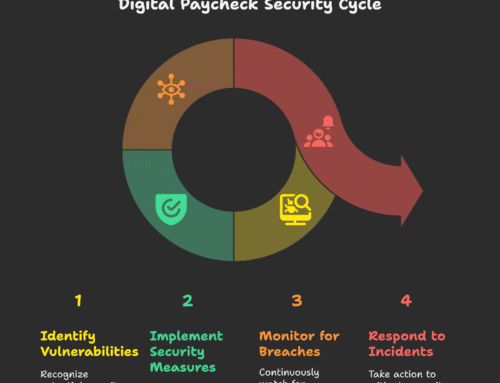The workplace today is a never-ending tug-of-war over attention. Emails ping, messages flood chat channels, and virtual meetings interrupt the day, leaving little time for deep, uninterrupted work. For teams, this ceaseless disruption isn’t just blocking productivity—it depletes energy and morale. Work accumulates, deadlines loom, and the sense of progress erodes under a tsunami of distractions. However, amidst this distraction, disciplined methodologies such as time-blocking and the Pomodoro Technique offer a lifeline. Such methodologies enable teams to regain focus, streamline cooperation, and yield results without requiring additional hours or heroic efforts.
Image by Freepik
The High Cost of Distraction
Distraction is more than a frustration—it’s an institutional dampener on productive teamwork. Where attention is fractured, momentum flags along with it. Task-switching or interrupt-driven responses pull individuals out of their workflow, forcing them to repeatedly restart their mental processes. For a team, this ripple effect multiplies: one person’s slowdown equates to misaligned priorities and stalled projects. The result is an overworked but underachieving workforce trapped in a cycle of reactive rather than proactive effort.
Time-blocking is an antidote strategy. Scheduling blocks of time for focused effort allows teams to shield their attention and concentrate it on the things that matter. Combined with a tool like the Pomodoro Technique, the strategy becomes a systematic method—one that enhances output while also restoring a sense of control and agency throughout the workday.
Why Time Management Fuels Engagement
Autonomy over one’s time is not a luxury—it’s a catalyst for better work. When workers have the freedom to select when and how they work, they’re better able to connect with their work. Time-blocking transforms chaotic, interruption-ridden days into structured blocks, enabling individuals and teams to prioritize their tasks deliberately. This shift doesn’t merely make things more efficient; it establishes an environment where people thrive rather than merely survive.
The psychological dividend is clear. A team that knows when they will work—and when they won’t—can greet their work with courage rather than dread. Full schedules don’t feel so daunting when broken down into manageable chunks, and the mental fatigue of being perpetually switched on is alleviated by a rhythm that benefits both productivity and happiness.
The Pomodoro Technique: The Power of Simplicity
At the core of this methodology is the Pomodoro Technique, developed by Francesco Cirillo in the 1980s. It is based on a simple premise: work for concentrated periods of 25 minutes, interspersed with a 5-minute break, and after four repetitions, take a more extended rest of 15–30 minutes. This framework leverages the brain’s natural ability to make short, intense bursts of focus without succumbing to the mental fatigue that results from prolonged, continuous effort.
For teams, the process is a productivity driver for individuals. For groups, it serves as an alignment system. Imagine a group of individuals scheduling their 25-minute “sprints” to work on a shared goal—such as writing a report, brainstorming ideas, or debugging code—broken up by brief check-ins during break times. This cadence provides sufficient structure to keep up without being so inflexible that it cannot adapt to the pressures of creativity or time. The result is a team working together, not a group of diverse individuals scrambling to keep up.
Notion: A Hub for Team Focus
Tools augment the effectiveness of time-blocking, and Notion is a natural fit. As it is already a go-to for task, document, and project timeline management, Notion can be the one place where focus strategies are consolidated. Rather than having to set up multiple apps to use as timers, task logs, and coordination tools, teams can consolidate everything into one. This removes friction from context switching between tools and maintains the focus where it must be—on the work.
One of the coolest things about Notion is how simple it is to slip a Pomodoro widget Notion right into your dashboard. Whether it’s a built-in timer or a handy widget, team members can initiate a 25-minute focus session without leaving their project page. Setting it up is a snap—just add the Pomodoro widget to Notion, link it to a task list or calendar, and press the start button. It’s so easy and intuitive that you don’t need extra apps or logins, which makes jumping in feel smooth and natural.
Real Benefits for Real Teams
If teams bring time-blocking and Pomodoro into the workflow, the benefits add up quickly:
- More Concentration: One task per fixed duration sharpens concentration and reduces mental chatter. Distractions lose their power when a clock is ticking.
- Recharge Breaks: Taking a five-minute break—to stretch, grab water, or simply breathe—recharges energy and prevents burnout.
- Less Stress: Regularized intervals break the “on” mode, giving regular relief in the middle of busy days.
- Better Team Synchronization: Collaborative focus blocks create clear windows for teamwork, reducing the chaos of random interruptions.
Picture a design team with a deadline to meet. By dedicating 25-minute blocks to sketching ideas and using breaks to catch up, they can maintain consistent work without sacrificing quality. Week in and week out, this rhythm can reverse output, allowing scatter-shooting efforts to gel into unified results.
Making It Work: Hands-on Steps
Implementing time-blocking doesn’t require a top-down mandate or a cliff’s learning curve. Here’s how to do it:
1. Model the Behavior
A leader can model by displaying a Pomodoro widget on a shared Notion page, illustrating how a 25-minute block is applied to a specific task. Proximity fosters curiosity and uptake.
2. Start Small and Voluntary
Launch the approach as an option, not a mandate. A one-week trial enables team members to experiment without anxiety, buy-in naturally accruing.
3. Focus on Results, Not Rituals
Avoid obsessing over checking each Pomodoro in endless detail. Gauge success by outcomes—are projects on time? That’s the significant metric.
4. Schedule Team Sprints
Reserve 90 minutes (three Pomodoros) on the calendar for deep group work. Prohibit meetings and disruptions during this period to make significant dents.
A practical approach: Invite your team to signal focus time with a status message—e.g., “In a Pomodoro, back at 10:25″—as a polite way to establish a boundary.
Change can also generate doubt. Time-blocking can be perceived as limiting or unrealistic for fluid and creative work. Counter this by demonstrating flexibility: stretch to 50 minutes for challenging tasks or hold the approach for priority initiatives. Highlight its autonomy—team members maintain control over their day, rather than adhering to a new, rigid system. A single trial sprint is more likely to turn skeptics into believers than endless descriptions.
Beyond Tools: Building an Intentional Culture
This isn’t about getting more effort out of people—it’s about valuing their time and attention. Time-blocking, powered by tools such as Notion and the Pomodoro Technique, is a quiet revolution in how teams operate. It’s not a silver bullet, but a step toward a culture that values clarity over confusion, and movement forward over busyness.
Begin with a single 25-minute block. Pilot it on an annoying task or a group challenge. Notice how a slight variation in structure carries over into hours of focus—and a group that’s not merely keeping up but racing ahead.
Sources:







Leave A Comment